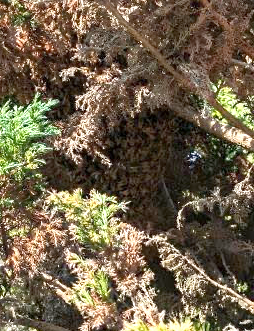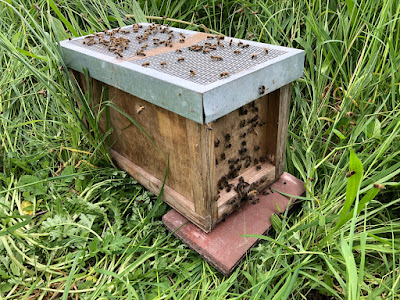Every beehive has a single queen bee, and the queen in hive #2 is called Eunice. She is named after Eunice Newton Foote, who was a scientist, and who discovered that certain gases increases in temperature when exposed to sunlight - a phenomenon that we now refer to as the Greenhouse Effect.
Eunice was born Eunice Newton in Connecticut in 1819. (Fun fact - her father's name was Isaac Newton, so of course she became a scientist...!) She attended school at the Troy Female Seminary, which was a preparatory school founded by Emma Willard, an education activist and feminist. She was encouraged to attend science courses at the nearby Rensselaer School, which covered both scientific theory and laboratory experimentation.
In 1841, Eunice married lawyer and mathematician Elisha Foote. Elisha had undertaken his training under judge Daniel Cady, who was the father of women's rights activist Elizabeth Cady Stanton. In 1848, Eunice and Elizabeth Cady Stanton joined several other women's rights campaigners at the Seneca Falls Convention, which was the first convention on women's rights. Eunice was a member of the the convention's editorial committee, and was a signatory to the convention's Declaration of Sentiments, which demanded voting rights for women, as well as other legal and social rights.
Eunice conducted several experiments in which she investigated the effect of sunlight on different gases. This involved exposing tubes of different gases to direct sunlight at different pressures, assessing moist and dry gases, and comparing with gases placed in the shade. She made two important observations: firstly, the amount of moisture in the gas affected the temperature; and secondly, the tube filled with carbon dioxide became hotter than the others when placed in direct sunlight. She also noted that the tube filled with carbon dioxide took far longer to cool down than the other tubes.
Eunice theorised that "An atmosphere of that gas would give to our earth a high temperature; and if, as some suppose, at one period of its history, the air had mixed with it a larger proportion than at present, an increased temperature from its own action, as well as from increased weight, must have necessarily resulted." In other words, she drew a direct link between an increased amount of carbon dioxide in the atmosphere, and global warming.
Eunice wrote up her findings in a paper titled Circumstances Affecting the Heat of the Sun's Rays, which was presented on her behalf by Joseph Henry (of the Smithsonian) to the American Association for the Advancement of Science in 1856. It was published the same year in The American Journal of Science and Arts.
Eunice's later work involved experiments on static electricity in air, including the effects of temperature, pressure and water vapour on electrical charge. She also worked on a number of inventions throughout her life, including a more efficient paper-making machine, and a thermostatically-controlled cooking stove.
As with many female scientists, Eunice's work was overlooked for many years, and her discovery attributed to a man - John Tyndall, in the case of the warming action of carbon dioxide and water vapour. However, Tyndall published his findings three years after Eunice, and so credit for the discover properly belongs to her.
You can find out more about Eunice Newton Foote here:
https://en.wikipedia.org/wiki/Eunice_Newton_Foote
Here is a photograph of her namesake, queen Eunice:
Science bonus!
Regular readers will know how much we like an actual research paper at The Southdown Apiary. So here's an HTML transcript of Eunice's original 1856 paper, published in The American Journal of Science and Arts:
https://www.patreon.com/posts/transcript-of-of-34890503
It's also available as a PDF scan:
https://ecology.iww.org/PDF/misc/foote_circumstances-affecting-heat-suns-rays_1856.pdf
And in a fancy web-reader:
https://archive.org/details/mobot31753002152491/page/382/mode/2up?view=theater













